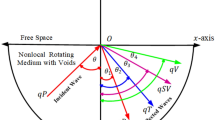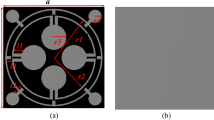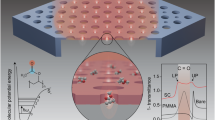Abstract
IF an electromagnetic wave passes through a medium containing free electrons, which may make collisions with heavy particles, in the presence of a uniform magnetic field, the refractive index and absorption coefficient of the medium are given by the Appleton-Hartree equation1:  where μ = refractive index; X = absorption coefficient; X = ƒ0
2/ƒ2; Y
T = (ƒH/ƒ) sin Θ; Y
L= (ƒH/ƒ) cos Θ; Z = v/2πƒ; ƒ = frequency of wave; ƒ0 = plasma frequency; ƒH= gyrofrequency; ν = frequency of collisions between electrons and neutral molecules; Θ = angle between wave normal and magnetic field.
where μ = refractive index; X = absorption coefficient; X = ƒ0
2/ƒ2; Y
T = (ƒH/ƒ) sin Θ; Y
L= (ƒH/ƒ) cos Θ; Z = v/2πƒ; ƒ = frequency of wave; ƒ0 = plasma frequency; ƒH= gyrofrequency; ν = frequency of collisions between electrons and neutral molecules; Θ = angle between wave normal and magnetic field.
This is a preview of subscription content, access via your institution
Access options
Subscribe to this journal
Receive 51 print issues and online access
$199.00 per year
only $3.90 per issue
Buy this article
- Purchase on SpringerLink
- Instant access to full article PDF
Prices may be subject to local taxes which are calculated during checkout
Similar content being viewed by others
References
Ratcliffe, J. A., The Magneto-ionic Theory and its Application to the Ionosphere (Cambridge Univ. Press, 1959).
Booker, H. G., Proc. Roy. Soc., A, 150, 267 (1935).
Author information
Authors and Affiliations
Rights and permissions
About this article
Cite this article
WALKER, A. The Quasi-Longitudinal Approximation to the Appleton-Hartree Equation. Nature 189, 742 (1961). https://doi.org/10.1038/189742a0
Issue date:
DOI: https://doi.org/10.1038/189742a0



